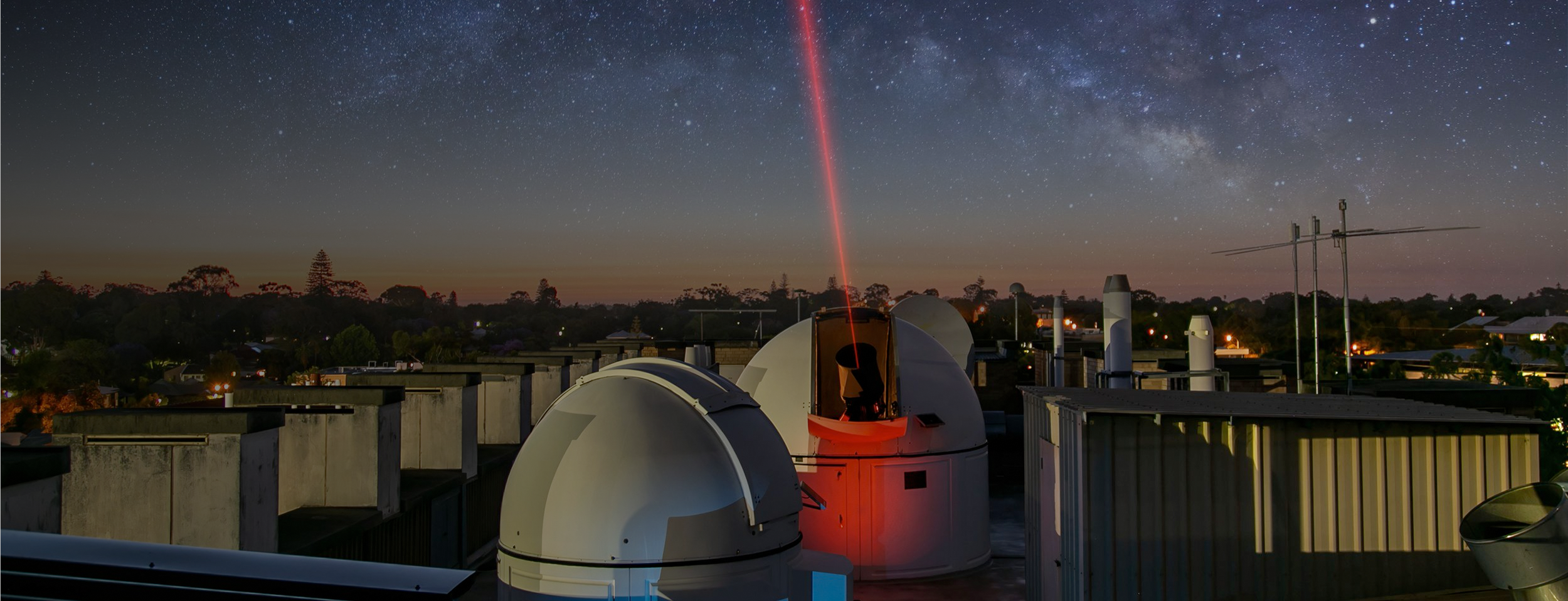
About TeraNet
Revolutionising Space Communication from Australia
Pioneering optical communication technologies to address global challenges and enable the future of space exploration
Australian-led Innovation
TeraNet is an Australian-led research initiative within the International Centre for Radio Astronomy Research (ICRAR) at the University of Western Australia (UWA), revolutionising space communication through advanced optical technologies.
Located in Western Australia, TeraNet's innovative three-node optical ground station network, developed by UWA, supports secure and advanced communications for international space missions operating between low earth orbit and the Moon.
Through collaboration with leading organisations and research teams, TeraNet is bridging the gap between Earth and space, shaping the future of exploration and connectivity, with full implementation targeted by 2026.
Our Mission
To advance space communication through pioneering research, developing robust optical communication networks that enable global connectivity and facilitate groundbreaking exploration.
Our Vision
To be a global leader in optical communication, empowering space exploration and collaboration across the universe, while inspiring the next generation of innovators in science and technology.
Addressing the Challenges of Space Communication
-
The Australian Space Agency has identified ‘Communications Technologies and Services’ as a National Civil Space Priority Area, driven by the growing demand for secure and high-capacity satellite communications.
-
Innovative optical (laser) technologies offer solutions by delivering secure, internet-like data rates from low Earth orbit—thousands of times faster than traditional radio technologies. They also enable quantum-secured communication and ultra-precise spacecraft positioning and navigation.
Our Solution: The TeraNet Optical Ground Station Network
TeraNet tackles the communication bottleneck challenge by developing a three-node optical ground station network in Western Australia. The network consists of:
TN-1 is a 70cm optical ground station at The University of Western Australia.
TN-2 is a 70cm optical ground station at the Mingenew Space Precinct.
TN-3 is a 40cm mobile optical ground station, deployable worldwide, starting with the European Space Agency’s New Norcia facility.
Supported by funding from the Australian Space Agency, UWA, and the Western Australian Government, TeraNet's innovative network is setting new benchmarks in secure and efficient space communication.
The Free-Space Laser Communications Journey
2014
Group started at UWA
2018
First coherent free-space timing link
2020
Telescope converted into ground station
2022
Highest data rate to aircraft
World best laser transfer stability
2023
TeraNet project funded
2024
TN-1 optical ground station at The University of Western Australia
TN-3, the first rapidly-deployable mobile ground station
2025
TN-2 constructed at Mingenew Space Precinct
Looking Ahead
As TeraNet transitions to optical commercial operations, it will provide data relays for low Earth orbit and lunar missions, supporting quantum-secured communications, , and optical timing and positioning.
Ultimately, TeraNet aims to join a federated global optical mesh network, connecting with European and US ground stations to enhance global space connectivity.
In addition to technical advancements, TeraNet will create high-value careers, foster international collaboration, and contribute to Australia’s space technology revenue, making Western Australia a global hub for space innovation.




